🌿 Natural Wonders of New Zealand: Milford Sound and More 🏞️
Discover the breathtaking beauty of Milford Sound and other New Zealand marvels

Introduction
Imagine a land where snow-capped peaks stand tall beside pristine fjords, where volcanic landscapes come alive with geothermal wonders, and lush greenery is surrounded by crystal-clear waters. Welcome to New Zealand, a country renowned for its breathtaking natural beauty.
In this blog post, we invite you to embark on a journey through the remarkable natural wonders of New Zealand. From the iconic Milford Sound to the volcanic landscapes of the Tongariro Alpine Crossing, the glacial regions of Franz Josef and Fox, the geothermal wonderland of Rotorua, and the idyllic Bay of Islands, New Zealand’s landscapes offer a world of adventure and wonder.
So, let’s explore the beauty of New Zealand’s natural wonders, uncover their unique charm, and discover why this country is a paradise for nature enthusiasts and adventure seekers.
Milford Sound: A Fiord’s Majesty
Description of Milford Sound’s Dramatic Landscapes
Nestled on the southwestern coast of New Zealand’s South Island, Milford Sound is a place of unparalleled natural beauty and dramatic landscapes. It’s often regarded as one of the most iconic and awe-inspiring fiords in the world. The sheer grandeur of the scenery in Milford Sound is enough to leave anyone in a state of wonder.
Steep, towering cliffs rise vertically from the dark, glacial waters below. These cliffs are often shrouded in mist, adding an ethereal quality to the scene. The lush, temperate rainforests that cloak the mountainsides create a striking contrast to the rugged rock faces. Waterfalls cascade down these cliffs, with the most famous of them all, Stirling Falls, plummeting from a staggering height of 155 meters (over 500 feet).
Unique Geological Features that Make it a Natural Wonder
Milford Sound’s geological origins are as fascinating as its visual appeal. This fiord was carved by glaciers during the last Ice Age, creating a deep, U-shaped valley that was later filled by the sea. The result is an incredibly deep and narrow waterway, with depths plunging to around 290 meters (950 feet) in some parts.
One of the distinctive features of Milford Sound is its spectacular underwater observability. The combination of low-sediment runoff from surrounding valleys and the presence of black coral and other unique marine life in the waters makes it a paradise for divers and underwater photographers. The depths of the fiord are teeming with a variety of marine species, providing a glimpse into a world seldom seen by many.
The Best Ways to Experience Milford Sound’s Beauty
To truly appreciate the beauty of Milford Sound, it’s essential to immerse yourself in its natural wonder. Here are some of the best ways to experience this majestic fiord:
- Scenic Cruises: Taking a boat cruise is the most popular way to explore Milford Sound. These cruises offer breathtaking views of the towering cliffs, cascading waterfalls, and the wildlife that calls this place home. Keep your camera ready for the resident seals and dolphins.
- Kayaking Adventures: For a more intimate experience, consider kayaking on the serene waters of Milford Sound. Paddle close to the cliffs and waterfalls, feeling the sheer size and majesty of the landscape up close.
- Hiking Trails: Milford Sound is surrounded by an extensive network of hiking trails, with the Milford Track being the most famous. Trekkers can explore the rainforests, mountains, and valleys, immersing themselves in the pristine wilderness.
- Scenic Flights: Get a bird’s-eye view of Milford Sound by taking a scenic flight. From above, you can grasp the vastness and grandeur of this natural wonder.
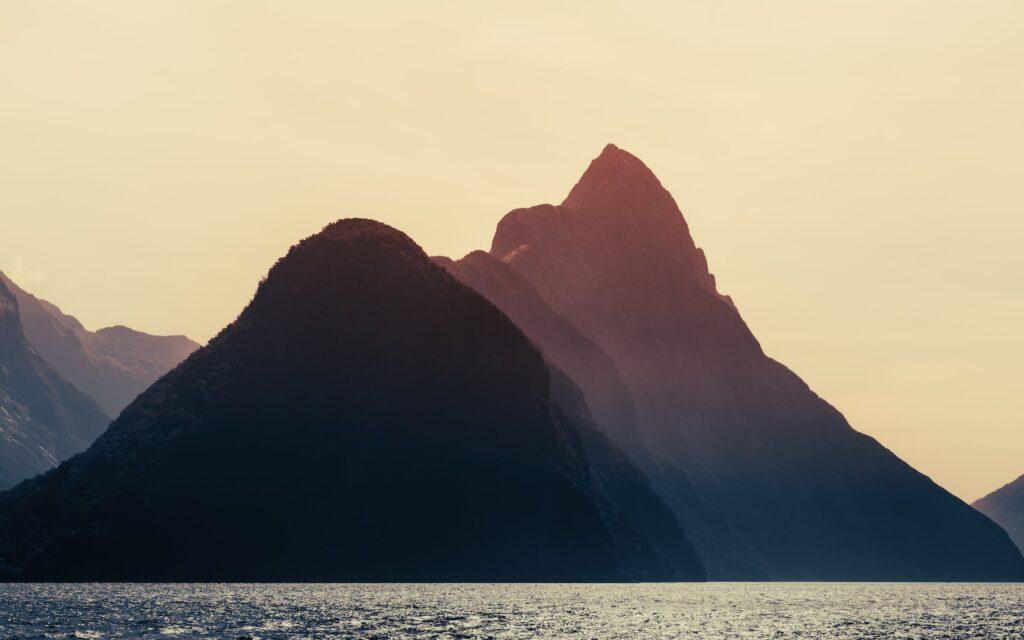
The Remarkable Tongariro Alpine Crossing
Introduction to Tongariro National Park
Nestled in the heart of New Zealand’s North Island, Tongariro National Park is a UNESCO World Heritage site and a place of extraordinary natural beauty and cultural significance. Established in 1887, it holds the distinction of being New Zealand’s oldest national park and is known for its stunning landscapes, rich Maori heritage, and the famous Tongariro Alpine Crossing.
Tongariro National Park is not only a haven for outdoor enthusiasts but also a place of cultural importance to the local Maori communities. The park is home to three active volcanoes, Tongariro, Ngauruhoe, and Ruapehu, each with its unique characteristics. These volcanoes, along with their surrounding landscapes, make the Tongariro Alpine Crossing a remarkable hiking experience.
Hiking the Tongariro Alpine Crossing
The Tongariro Alpine Crossing is often heralded as one of the world’s greatest day hikes. Stretching over 19.4 kilometers (approximately 12 miles), this trail offers a captivating journey through diverse terrains, from alpine meadows to volcanic craters. The Crossing typically takes between 7 to 8 hours to complete, making it an adventure that requires proper preparation.
Hikers can expect to encounter breathtaking scenery, including emerald lakes, steaming vents, and lunar-like landscapes. The trail begins at the Mangatepopo car park, meandering through the Mangatepopo Valley, eventually ascending to the South Crater, a vast flat expanse surrounded by rugged volcanic peaks. The climb to the Red Crater rewards hikers with panoramic views, and the descent to the stunning Emerald Lakes provides a colorful spectacle that is nothing short of mesmerizing.
One of the highlights of the Tongariro Alpine Crossing is the opportunity to walk on the slopes of Mount Ngauruhoe, famously known as Mount Doom from the “Lord of the Rings” film series. The landscape is strikingly otherworldly, and it’s no wonder it was chosen as a filming location for the epic fantasy saga.
The Otherworldly Landscapes and Volcanic Features
The Tongariro Alpine Crossing is renowned for its otherworldly landscapes and unique volcanic features. The trek takes hikers through a terrain that is both surreal and visually captivating. The track is surrounded by rugged volcanic peaks, mineral-rich lakes, and geothermal wonders.
The Red Crater, with its vibrant rust-colored hues, stands in stark contrast to the surrounding landscape, and the views from its rim are simply awe-inspiring. The Emerald Lakes are a striking shade of green due to their high mineral content and are nestled within the Central Crater. As you make your way through the volcanic terrain, you’ll pass by steaming vents, reminding you of the park’s geothermal activity.
The Tongariro Alpine Crossing is not only an adventure for hikers but also a geological wonder, allowing you to witness the forces of nature at work. It’s a place where the Earth’s raw power is on full display, making every step a truly remarkable experience.
The Glaciers of Franz Josef and Fox
A Glimpse into the West Coast’s Glacier Country
Nestled on the rugged and pristine West Coast of New Zealand’s South Island, the Franz Josef and Fox Glaciers are two of the most renowned and accessible glaciers in the Southern Alps. These icy giants are located within the larger Te Wahipounamu World Heritage Area, and their dramatic, ever-changing landscapes draw visitors from all over the world.
The West Coast’s glacier country is characterized by lush rainforests, towering mountains, and, of course, the massive glaciers that flow down from the Southern Alps. These glaciers are more than just geological wonders; they are living entities, constantly shifting and shaping the surrounding environment.
Hiking on Franz Josef and Fox Glaciers
Hiking on the Franz Josef and Fox Glaciers is a once-in-a-lifetime experience that allows you to get up close and personal with these incredible ice formations. Both glaciers offer guided tours that take you on a journey into their icy realms, providing an adventure that combines adrenaline with awe-inspiring natural beauty.
These guided glacier hikes typically include a scenic helicopter flight to the glacier’s upper reaches, allowing you to bypass the difficult and treacherous lower sections. Once on the glacier, you’ll don crampons and follow knowledgeable guides who will lead you through a maze of crevasses, ice caves, and seracs. The dynamic nature of these glaciers ensures that no two visits are the same, as the ice is constantly in motion, creating new features and challenges.
The Franz Josef and Fox Glaciers are unique in that they flow down to relatively low altitudes, making them more accessible for hikers compared to many other glaciers around the world. The combination of stunning alpine vistas and the raw power of glacial ice makes these hikes an unforgettable adventure.
The Ever-Changing Beauty of the Glacial Landscapes
One of the most captivating aspects of the Franz Josef and Fox Glaciers is their ever-changing beauty. The dynamic nature of these glaciers means that their landscapes are in a state of constant flux. As the ice slowly flows down from the mountains, it carves out new crevasses, ice caves, and tunnels. These formations create an environment that is both alien and breathtakingly beautiful.
One of the key attractions on these glaciers is the opportunity to explore ice caves. These natural wonders are carved out by meltwater and offer a surreal and tranquil world beneath the ice. The interplay of light and ice within these caves creates a magical and almost surreal atmosphere, making them a favorite subject for photographers.
The glaciers’ terminus areas are equally mesmerizing, with massive ice cliffs and icefalls that stretch out into the rainforest, creating a stark contrast with the lush green surroundings.
The Geothermal Wonderland of Rotorua
Introduction to Rotorua’s Geothermal Wonders
Nestled in the heart of New Zealand’s North Island, Rotorua is a geothermal wonderland like no other. This picturesque city is renowned for its unique geological features, which make it a captivating destination for travelers from around the globe. Rotorua’s landscape is dotted with geysers, mud pools, and natural hot springs, all of which result from the city’s location within the Pacific Ring of Fire.
The city’s geothermal activity is not only a testament to the Earth’s raw power but also an integral part of its cultural heritage. From the moment you arrive in Rotorua, you’ll be immersed in a world of steam, sulfur, and thermal beauty.
Visiting Geysers, Mud Pools, and Natural Hot Springs
Rotorua’s geothermal wonders offer a fascinating blend of natural beauty and geological marvels. Visitors can explore a variety of unique attractions that showcase the city’s geothermal features.
1. Geysers: Rotorua is home to some of the world’s most active geysers. The Pohutu Geyser in Te Puia is a star attraction, erupting regularly and reaching heights of up to 30 meters. Witnessing the power and grace of these geothermal giants is an awe-inspiring experience.
2. Mud Pools: Rotorua’s mud pools are another intriguing feature of its geothermal landscape. The boiling, bubbling mud creates a surreal and mesmerizing sight. Places like Wai-O-Tapu Thermal Wonderland offer the chance to witness these mud pools in all their glory.
3. Natural Hot Springs: Soaking in the healing waters of Rotorua’s natural hot springs is a true delight. These hot pools are renowned for their therapeutic properties, offering relaxation and rejuvenation amidst stunning surroundings. The Polynesian Spa is one of the most famous places to experience the benefits of these geothermal waters.
Experiencing the Unique Geothermal Culture
Rotorua’s geothermal wonders are not confined to the natural world; they also play a pivotal role in the region’s culture and traditions. The Maori people, the indigenous inhabitants of New Zealand, have a deep connection to the geothermal activity in the area.
1. Cultural Performances: Visitors to Rotorua have the opportunity to witness authentic Maori cultural performances. These shows often take place at geothermal attractions and include traditional song, dance, and the famous haka, a powerful Maori war dance.
2. Hangi Feasts: Experience the unique flavors of New Zealand with a traditional Maori hangi feast. Food is cooked using the geothermal heat, giving it a distinct and delicious taste. Sharing a meal with the local Maori community is a fantastic way to immerse yourself in their culture.
3. Thermal Spas: Rotorua boasts several thermal spas that incorporate the healing properties of the region’s geothermal waters into their wellness treatments. These spas offer a rejuvenating experience, with massages, facials, and body treatments that are enhanced by the therapeutic benefits of the local hot springs.
The Spectacular Bay of Islands
Description of the Bay of Islands’ Idyllic Beauty
The Bay of Islands, located in the far north of New Zealand, is a slice of paradise renowned for its idyllic beauty. Comprising 144 stunning islands and a plethora of secluded coves, this region boasts a pristine, unspoiled landscape that has been captivating travelers for centuries. The name itself, “Bay of Islands,” alludes to the archipelago’s abundance of inlets and harbors, making it a haven for water-based activities and exploration.
Turquoise waters gently lap against golden sandy shores, surrounded by lush greenery and a tranquil ambiance. This breathtaking landscape is not only a feast for the eyes but also a place where history, culture, and adventure intertwine seamlessly.
Exploring Pristine Beaches, Marine Life, and Historic Sites
The Bay of Islands is a destination that offers a wealth of experiences for all types of travelers. Here’s a glimpse of what you can explore:
1. Pristine Beaches: The Bay of Islands boasts some of the most beautiful beaches in New Zealand. From the serene sands of Paihia Beach to the remote and unspoiled stretches of Cape Brett and Urupukapuka Island, sunseekers and beach lovers will find their own slice of paradise.
2. Marine Life: The clear waters of the bay are teeming with marine life, making it a snorkeler’s and diver’s dream. Swim alongside dolphins, encounter colorful fish, and explore vibrant underwater reefs. The region is also home to a thriving population of bottlenose dolphins, and boat tours offer the opportunity to observe these magnificent creatures in their natural habitat.
3. Historic Sites: The Bay of Islands holds a significant place in New Zealand’s history. Waitangi, in particular, is of great importance as the site where the Treaty of Waitangi was signed in 1840, forming the basis of the nation. The Waitangi Treaty Grounds provide an insightful look into the country’s past and Maori culture. Russell, once known as the “Hellhole of the Pacific” due to its raucous whaling days, is now a charming and historic village with colonial-era buildings.
Water Activities and the Maori Cultural Influence
Water activities and Maori culture play a pivotal role in the Bay of Islands experience:
1. Water Activities: The bay is a water sports enthusiast’s paradise. You can embark on sailing adventures, charter a fishing boat, or go kayaking to explore hidden coves and islands. The Hole in the Rock, a natural rock formation on Motukokako Island, is a popular spot for boat tours.
2. Maori Cultural Influence: The Maori people have deep roots in the Bay of Islands. You can engage with their rich culture through guided tours and performances that include traditional songs, dances, and the haka. Maori traditions and artistry are integral to the region’s identity, and learning about their customs provides a deeper connection to the land.
FAQ’s
Q: How do I get to Milford Sound?
A: Milford Sound is accessible by road from Queenstown or Te Anau, and you can also opt for scenic flights or coach tours.
Q: Are there any accommodations near Milford Sound?
A: While there are no accommodations within Milford Sound itself, you can find lodging options in nearby Te Anau and Queenstown.
Q: Can I swim in Milford Sound?
A: Swimming in Milford Sound is possible, but the water is quite cold due to glacial runoff, so be prepared for a chilly experience.
Q: Is there a best time to visit the Waitomo Glowworm Caves?
A: The glowworms are visible year-round, but the best time to visit is during the quieter months from May to September.
Q: Are there guided tours available for the Tongariro Alpine Crossing?
A: Yes, guided tours are recommended for safety and to gain insights into the area’s cultural and geological significance.
Q: Is it safe to hike on the Fox and Franz Josef Glaciers?
A: Guided glacier hikes are generally safe, provided you follow the guides’ instructions and wear the appropriate gear.
Conclusion
As we draw the curtain on our exploration of New Zealand’s natural wonders, it’s clear that this country is a treasure trove of breathtaking landscapes and outdoor adventures. From the majesty of Milford Sound to the otherworldly beauty of the Tongariro Alpine Crossing, the ever-changing glaciers of Franz Josef and Fox, the geothermal wonders of Rotorua, and the idyllic Bay of Islands, New Zealand offers an array of experiences for every nature lover.
As you contemplate your next adventure, remember that New Zealand, with its diverse and unparalleled beauty, beckons. Whether you’re a hiker, a wildlife enthusiast, or simply seeking serenity in nature, there’s something for everyone in this remarkable country. Get out there, explore these natural wonders, and create your own unforgettable memories in the land of kiwis and natural marvels.
UP NEXT

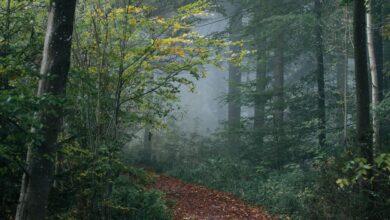
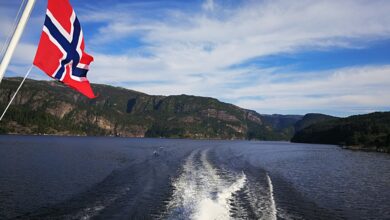
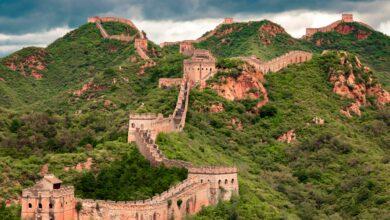
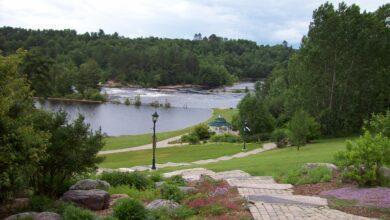
Facebook Comments